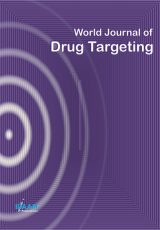Volume 1
January-March 2023
Akshay R Yadav, Vaishnavi S Patil
Abstract:
Enzymosomes are specially engineered lipid structures that provide a suitable microenvironment for the enzyme to be immobilised inside lipid structures or covalently coupled to the lipids’ outer surfaces. Its main use is to make permeation easier as well as to deliver targeted drugs to tumorous cellular sites. These vesicular systems provide a great deal of versatility in drug development, allowing for the elimination of a variety of side effects and bioavailability issues. The use of nano systems to deliver drugs to the CNS through the BBB is a promising lead for improving treatment methods for various types of malignancies. Enzymosomes, including ethosomes, transferosomes, pharmacosomes, virosomes, and non-lipoidal ones like niosomes, aquasomes, and others, are lipid bio carriers. Various studies have shown that each carrier is successful in its operation. Enzymosomes can thus serve as a assuring carrier nucleus in the development of a new generation of flexible drug design systems in the future.
Keywords: Enzymosomes, Lipid Bio Carrier, Lipid Structures, Targeted Drugs, Vesicular Systems.
Jyoti D Mali, Jameel Ahmed S Mulla
Abstract:
The eye’s complicated anatomy makes it difficult for pharmaceutical researchers to transport drugs to the patient desired areas via various methods of administration. The nano-based system’s creation aided in the delivery of the medicine in the required concentration. Low drug contact time and poor ocular bioavailability are problems with older approaches, which are caused by Lacrimation, tear turnover and drainage of solution. Also as a result of its uniqueness architecture and physiology, Barriers of several kinds, such as distinct layers of cornea, sclera, and retina, containing conjunctival blood flow, choroidal blood flow blood retinal and blood aqueous barriers and so on, ocular medication the delivery has been successfully a big issue for scientists. Furthermore, anatomical obstacles and eye physiological circumstances are crucial factors that influence medication delivery system design. Nanosized carriers have been created to improve penetration, bioavailability, and residence duration, including micro/nanosuspensions, liposomes, niosomes, dendrimers, nanoparticles, hydrogels, and prodrug methods. This review examines different elements of ocular medication administration, with a focus on nanocarrier-based techniques, such as the anatomy of the eye, its obstacles, distribution pathways, and the problems and constraints involved with the creation of innovative nanocarriers. Drug distribution via the ocular route has shown to be a key advancement in the future.
Keywords: Ocular, Human Eye, Route of Administration, Mechanism of Ocular Drug Absorption, Ocular Drug Delivery.
Akshay R Yadav
Abstract:
Seven different coronaviruses are currently known to cause human breathing disorders. The latest SARS-CoV-2 coronavirus outbreak in December 2019 is in the coronavirus 2B type, which is 80% identical to the SARS-CoV genome. In the future too, continuous mutation is likely. A variety of CoV therapies, such as immunomodulations, vaccines, antivirals specific to CoV and host-specific antivirals are being developed. Many people with COVID-19 have severe breathing problems. Human ACE2 receptor (PDB ID-1R42) is considered as receptor protein for molecular docking study of spike protein fragment with its receptor in human host. The study of in-silico docking was performed using Molegro virtual docker (MVD). In-silico docking studies have taken the place of the new version of GLIDE Software v5.5, built by Schrödinger. These findings showed that the binding energy in all active components ranged from -4.2 to -8.4 kcal/mol. If compared to the standard (-8.6 kcal/mol). It was found that, as opposed to the standard drugs, the investigated phytoconstituents showed potent inhibiting activity as the MolDock score directly represents possible binding to the enzyme.
Keywords: Malvastrum Coromandelianum, In-silico docking, Phytoconstituents, SARS-CoV2.
Akshay R Yadav
Abstract:
Coronavirus disease caused by SARS-CoV-2 faces an unparalleled challenge in the pursuit of suitable drugs for prevention and treatment. Given the rapid speed of scientific study and clinical evidence provided by the vast number of people readily infected with SARS-CoV-2, clinicians need evidence of effective medical care for this infection. Although some recent COVID-19 trials have shown clinical progress, several of these trials are ongoing, including pharmacokinetics, the optimum dosage regimen and the therapeutic and treatment period, and even considering randomised controlled experiments. Antimalarial, anti-inflammatory and antibiotics are present clinical proof of their success in treating COVID-19 patients. Vaccination is one of the safest strategies for managing infection. Effective vaccines therefore need to be developed. Recent progress in the manufacture of coronaviras vaccines is outlined and current vaccine adjuvants for efficacy improvements are highlighted.































